Full disclosure: To be clear, I am selling the Vortex and Vectors mentioned in the article. I chose them specifically for their qualities, and this test was to validate the choice before recommending them to others.
It all started when I tested the “made in China” Vector Continental 34mm 3-18×50 FFP, and I was very impressed with the quality of the glass. I thought to myself, am I not [for my purposes] being ripped off by the brand name, and, would I not be better off spending the coin on brass and lead instead. Admitting it was not easy: once a man spends a large sum of money on something, subconsciously he looks for every possible reason to justify the shattered piggy bank.
However, I had to come to terms with obvious reality: for my applications – shooting up to 1200 m (in very rare cases up to 1800-2000) at previously unknown distances on torso to full height targets, optics , above a certain threshold, are no longer a limiting factor in target identification and aiming. It is obvious that some extra money is charged just for the brand name, but there is also a difference in quality. To quantify this difference, and to understand if it is relevant for my needs, I have done this exercise.
Disclaimer: The comparison does not pretend to be complete or comprehensive (for example, optimum characteristics of a scope are not necessarily found at 12x magnification), nor objective (the eye is an individual instrument, with someone else the result might be slightly different). There have been no scientific measurements as such.
TL;DR
Modern scopes at [relatively] reasonable cost, in terms of optics, are well worth the big brand designs of 15-20 years ago. The Vector’s chinoiserie and the “made in Philippines” Vortex have proven to be equal to, and in some respects superior to, the S&B PMII 3-12×50! However, in terms of extreme performance (ELD detail, low light, etc.), the more recent “über high-end” designs from Kahles or S&B remain superior. The difference is, however, not very dramatic — at sunset, with the rest equal, it’s 10-15 minutes of extra vision over the last half hour of light.
Specifically for the Vector 34mm 3-18×50: in my view, it’s a very convincing design, with very good glass and mechanics. The depth of field (something I haven’t compared due to lack of time) looks quite comfortable. What specifically came out as a pleasant surprise was the very competent elimination of parasite light done by the optics designers – a quality I have never seen in a chinoiserie before. In optimising the design, Vector seem to prioritise contrast.
As a bottom line, I was immensely impressed with the chinoiserie, and with recent models more generally speaking. It’s not at all, but not at all the same as what I saw even 10-12 years ago, where there was the S&B, Kahles and Hensold at the top, and — far behind and below — all the others, and anything under 2 grand, at least in our parts, was barely usable.
An important caveat: Vector, like Vortex, have a wide variety of models in their inventories, including some outright junk. The conclusions in this article refer to specific rifle scope models and to no other.
Competition
On the starting line were Kahles K 6-24×56, S&B PMII 3-20×50, S&B PMII 3-12×50, Vortex Viper PST Gen2 3-15×44, and the Vector 34mm 3-18×50, all of which were set at 12x to have an equivalent basis for comparison.
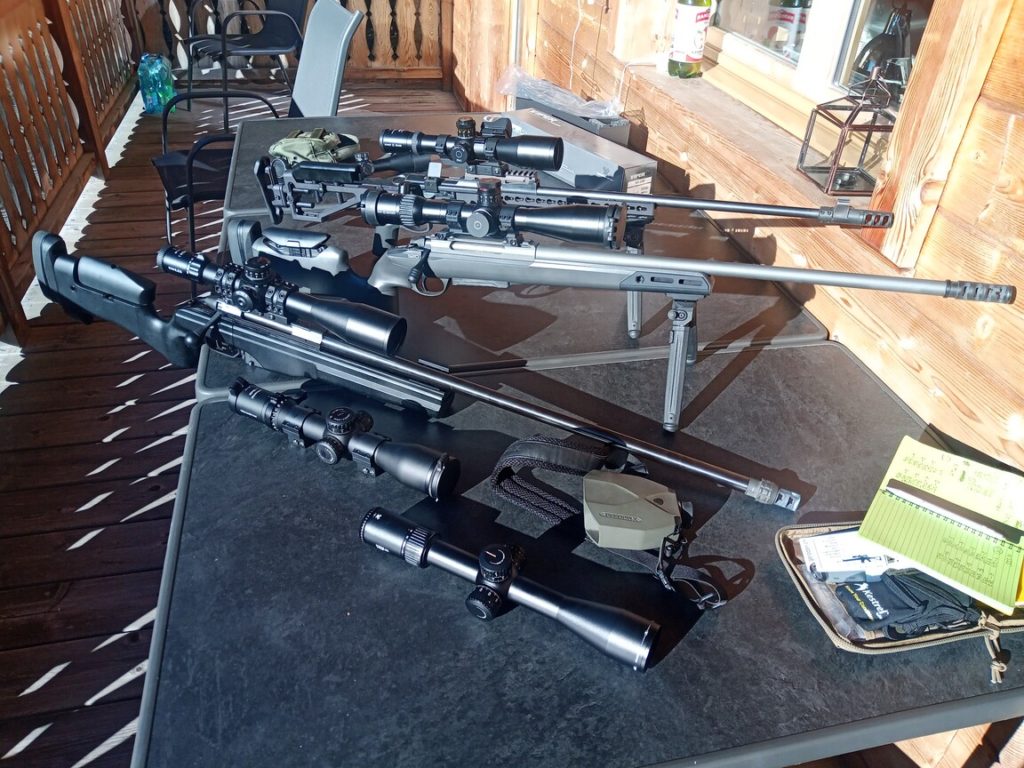
I have, of course, unmounted them from the rifles (re-zeroing is the price to pay) so as not to point at people at a distance of 1.5 km (yes, I’m a maniacal fanatic of the 4 rules).
All these instruments occupy roughly the same niche – relatively compact, (for lack of a better term) “tactical” optics for lightweight rifles. The reticle is in first focal plane and graduated in milliradians, external adjustment turrets, with clicks in thousandths too, zero-stop, turn indicator, variable magnification at 3-4x below and at 10-15x above (I almost never shoot above 12-15x; anything more than that, if available, is used mostly for observation). The K 642i stands out a bit – that’s much more of a scope than others (starting with the lens diameter), but the glass is great, setting an excellent bar for comparison.
Perfect light
In perfect light (clear day, sun in the back, target well lit), up to about 1200 m, all scopes gave about the same results. The images from the Kahles and the S&B 3-20x were a little better, but in practical terms the difference was negligible.
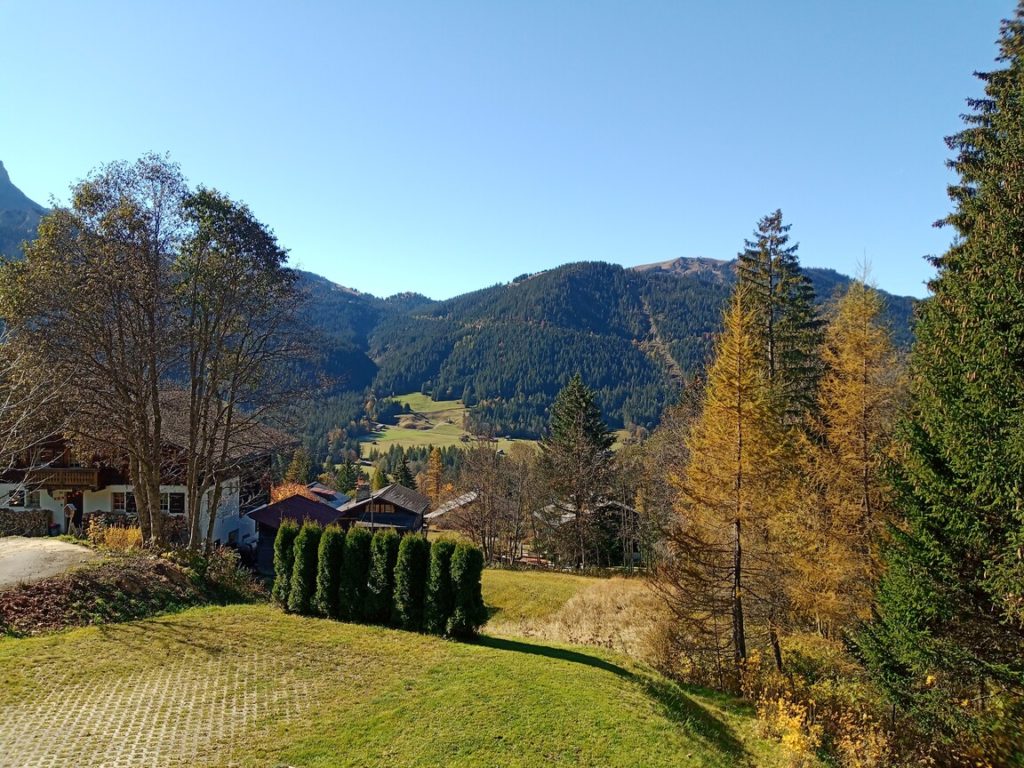
At a distance of over a kilometre, with all the scopes, I could see the walkers with their gear, distinguish whether it was a man or a woman, right down to the colour of the shoes and the leaves on the branches of a small bush next to the road.
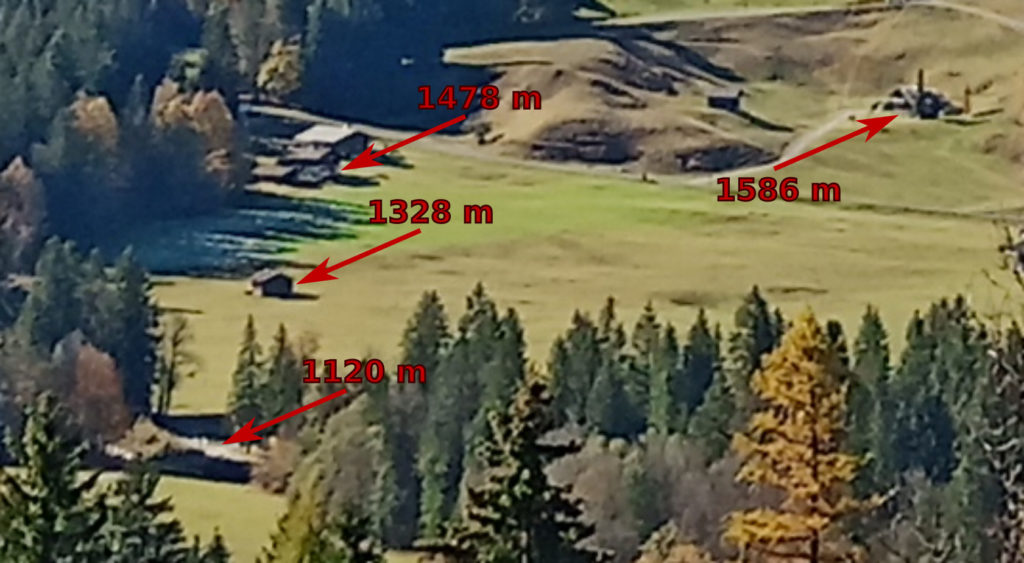
In perfect light conditions, I had to push to 1586m to get a discernible difference in target identification (I was looking at a house on the other side of the valley). And at 1586m the ranking was as follows:
1. Kahles K — perfect! An old man who sat on the terrace with his coffee was immediately identifiable as such, the interior of the car parked next to it was visible (seat backs, etc.), the level of detail was superb.
2. S&B 3-20x — not far behind the K. The optics seem to be better optimised for contrast, rather than resolution. Objects “pop out”, but for detail you have to concentrate a bit more.
3=4. The Vector and the Vortex. These two are equally good, but it’s a bit of the same scenario as (1) and (2). The Vector is optimized for contrast — objects are immediately visible, but you have to look harder to see the details. The Vortex is the other way around. (By the way, the EBR-7C reticle that Vortex put on their recent scopes is, for my taste, too thin and too busy — seriously gets in the way of target identification.)
That said, at 1586m, you can start to see a serious difference as compared to the two champions. The old man on the terrace under a tree does not stand out as such. If you know he’s there, you see, of course, a human figure, but the identification is not immediate. The interior of the car is not detailed.
5. The S&B 3-12x — closely follows the China and Phillipines, but has neither the contrast of the Vector, nor the resolution of the Vortex. That was a surprise! The S&B 3-12x is kind of my go-to fetish scope, and I was amazed to see that a chino at a third or quarter of the price could do as much, if not better. (Of course, I doubt either Vortex or Vector are anywhere near the same level of ruggedness and longevity, but as far as optics quality goes, – – -.)
Difficult light
In bad light I had 2 scenarios: sun in the face (target illuminated and target in shadow), and twilight — from the moment the sun disappeared behind the mountain, to the moment it was dark.
For the sun-in-the-face test, the time of appearance of visible stray light artefacts:
16:20 — S&B 3-12x
16:45 — Vortex
16:55 — S&B 3-20x
The K and the chinoiserie did not pick any glare until the end.
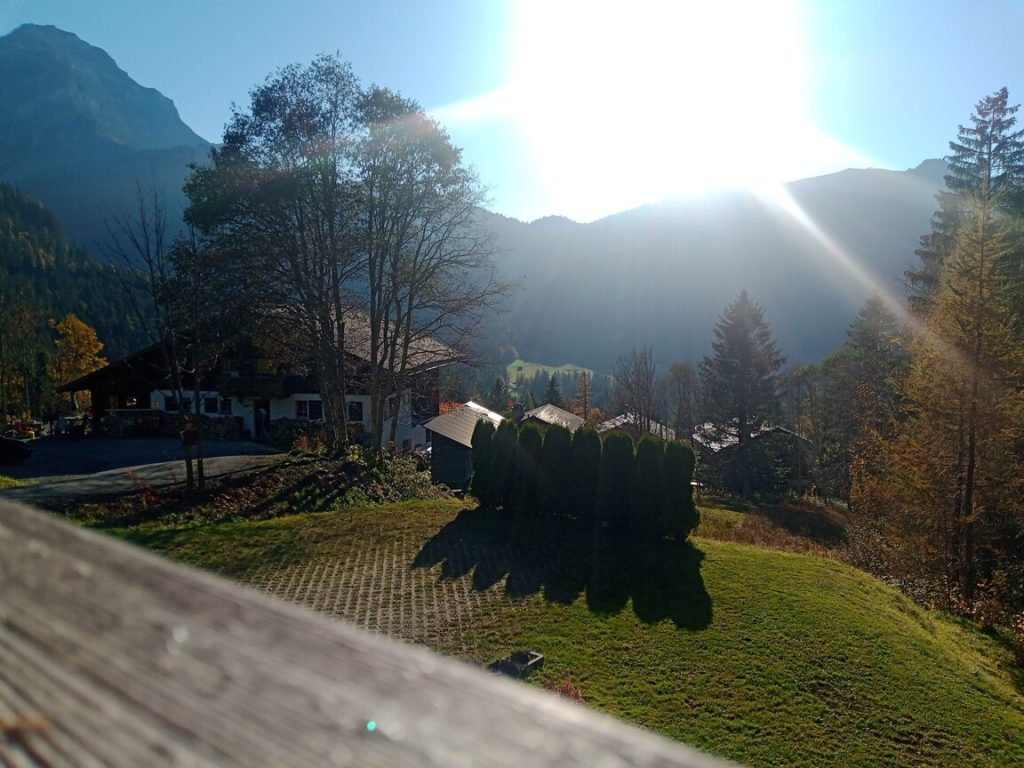
The only lens that really picked up a lot of stray light was the S&B 3-12x — to the point of seriously complicating the aiming when the sun got low enough.
Sun-in-the-face, illuminated target” ranking, 16:30-16:50, distance 1120m:
1=2. The two champions. No detectable difference in performance.
3=4. S&B 3-12x = Vector. Detail resolution was less easy than with 1-2 (lower contrast image), but still possible; a sunshade would have been of great help.
5. Vortex — the particular angle the sun was at that moment in relation to the optical axis, without actually glaring or making halos or flares, gave a “flat” over-illuminated image with very little relief. Painful.
Ranking “sun in the face, target in the shade”, 17:15-17:35, distance 1120m:
1. S&B 3-20x — the only one (despite some stray glare) that clearly resolves the texture of the grass and the silhouettes of small branches.
2. K — follows not far behind, but shadow details don’t come out right away, you have to concentrate.
3=4. Vortex = Vector. The texture of the grass is not visible, but the bushes are readable. The Vortex paradoxically works better than with a higher sun.
5. S&B 3-12x — unusable. When the target went into the shadows, the low sun gave so much stray light, that the scope did not resolve any details at all, you could just barely make out the big shapes.
The sun passed behind the mountain at 17:40. Until 18:15 at the distance of 1120m there was no noticeable difference in performance between the 5 scopes (sighting was very easy, especially compared to the sun in the face).
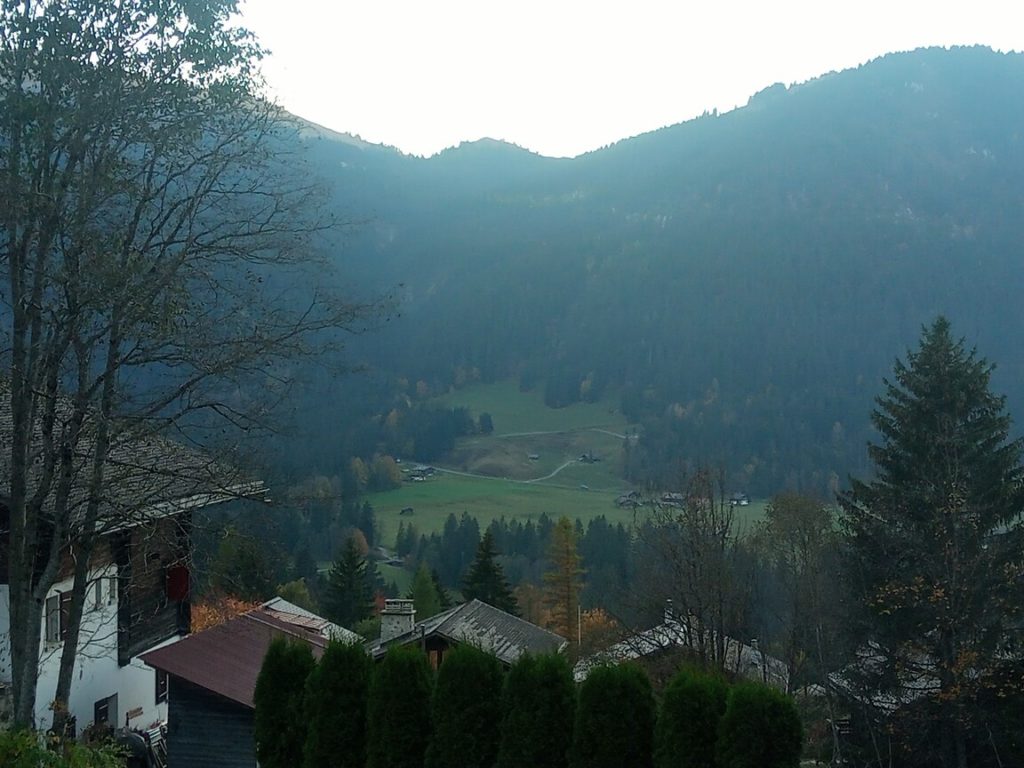
The following is simply the timing of discernible detail in the 5 scopes, as darkness gained on the valley.
18:15-18:25
1=2. The two champions. Here again, we could see that the K was more resolution-optimized, and the S&B had more contrast.
3. Vortex. Excellent. Not far behind 1=2, you really had to look hard for the small details that were visible in 1=2, but not in 3.
4=5. Vector = S&B 3-12x. Flatter and “whiter” image. You have to concentrate more to see details and textures.
18:30-18:40, target at 1478 m (chalet with a flagpole in front)
1. S&B 3-20x — detailed bushes, flagpole clearly visible.
2. K — visible bush, visible flagpole.
3. Vector — bush visible, flagpole barely visible.
4=5. Vortex = S&B 3-12 — bush is blurred, flagpole is not discernible.
18:45-18:55, the chalet at 1478 m + a barn at 1328 m
1. S&B 3-20x — flagpole barely visible, barn wall planks clearly visible
2. K — flagpole barely visible, barn wall planks blurred
3=4=5. The other 3. Flagpole invisible. Planks barely discernible. The Vortex’ eye-box is starting to get tricky, due to its smaller exit pupil and my pupil that dilated in the dark.
19:00 The S&B 3-20x is the last one to resolve the planks. In the others, only the silhouette of the barn is visible.
19:10 The S&B 3-20x and the K resolve the silhouette of the barn. In the others you can’t see anything.
19:15 It’s over. Nighttime.
In the mountains, night falls faster than on flatlands. On flat terrain, and in higher latitudes, the sunset is slower and the time from sunset to dusk is longer. In these cases, I guess, sensitivity of the optics to stray light from low sunlight will be a more important factor, as will the performance of the optics at dusk. But I hope the observations can be extrapolated.
Conclusions
The essential has been said in the TL;DR introduction. We are no longer in the 20th century. Before selling a liver to buy a über-scope, look through a few others in your typical shooting conditions. It may be that the difference in price would be better spent on a few thousand rounds of ammunition, which would make you a better shot, which is worth more than any equipment.